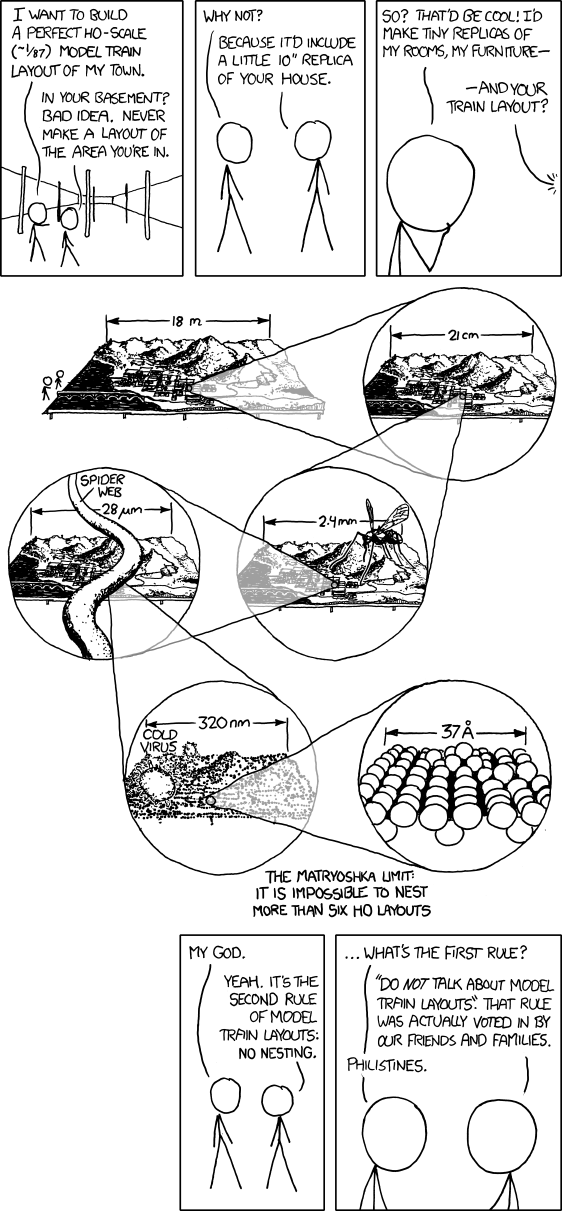7/31/2011
A Brief History ofApple Not Buying Things
Heeee, yep. (The Lala one is still sad to me.) [via Daring Fireball]
7/29/2011
7/17/2011
Guys, guys, guys!
I'm famous. Well, more like I bought myself some fame from a cool webcomic that my friends recently introduced me to, Poly in Pictures (hi PiP visitors! sorry my site's so neglected and cobwebby). (And now the recursive linking circle is complete.)
Because it's not a proper webcomic post without an example:

Because it's not a proper webcomic post without an example:

New MBTA paint schemes
So here's a couple-week-old one: The MBTA [just had] a contest to choose the newest scheme for their new engines from MPI (presumably more of the MP36/40 MPXpress family). These are the three options they gave:



(Okay, first off, why's the last one a different engine model than the other two - do or don't they have rear platforms??)
My initial reaction was a very railfan-typical preference for the first design that continues the current, classier lightning-stripe scheme (though the handling of the transition on the roof cowling behind the cab is weak).
With time though my designer side has found more faults with the detailing of that scheme (what's with that little strip in the middle of the nose??) and grown fonder of the other two. The front is really bold, which can feel cheesier and doesn't satisfy my railfan aesthetic, but does appeal to the rest of me. (Also the black on purple with gold pinstripe is just plain pretty.) I think it's fascinating how divided my design opinions are based on my headspace at the time! Regardless, these will be fun to see trackside.



(Okay, first off, why's the last one a different engine model than the other two - do or don't they have rear platforms??)
My initial reaction was a very railfan-typical preference for the first design that continues the current, classier lightning-stripe scheme (though the handling of the transition on the roof cowling behind the cab is weak).
With time though my designer side has found more faults with the detailing of that scheme (what's with that little strip in the middle of the nose??) and grown fonder of the other two. The front is really bold, which can feel cheesier and doesn't satisfy my railfan aesthetic, but does appeal to the rest of me. (Also the black on purple with gold pinstripe is just plain pretty.) I think it's fascinating how divided my design opinions are based on my headspace at the time! Regardless, these will be fun to see trackside.
7/16/2011
Massive ancient underground cities
Tens of thousands of people in a single underground city?! So cool. Apparently these cities are thought to have been used for religious purposes and to escape persecution and attackers.
One tunnel, wide enough for three people walking abreast, connects to another underground town six miles away.
7/06/2011
6/04/2011
Amtrak's 40th Anniversary Units
The Amtrak Heritage group on Flickr has a nice selection of photos of the different units (including a rebuilt F40PH they also did in phase III).
Heritage Line Up! by notcheight
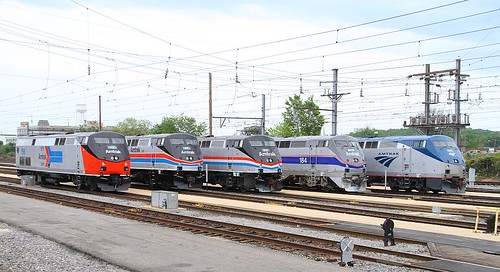
Phases I through V lined up left to right.
Amtrak #156 by lukibob17

Phase I is still my least-favorite - I thought it was ugly the first time around, and it doesn't adapt well to the lines of the P40s. The old logo is still much nicer than the stupid swooshes at least (though I'd change a few details like the text placement and spacing of the lines...).
Rounding the curve Amtrak #66 by kschmidt626
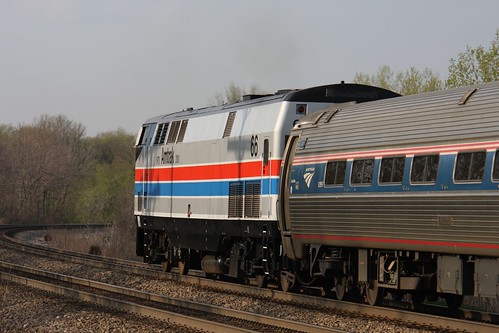
Phase II was definitely a product of it's day and I always felt that it aged poorly to my "modern" eyes. Of course, my early opinions were clearly colored by my feelings on the designs from the early Amtrak days in general. I actually think this unit shows it off far better than the original F40PH's did, and certainly better than the Superliner's adaptation.
45 Pace close by notcheight
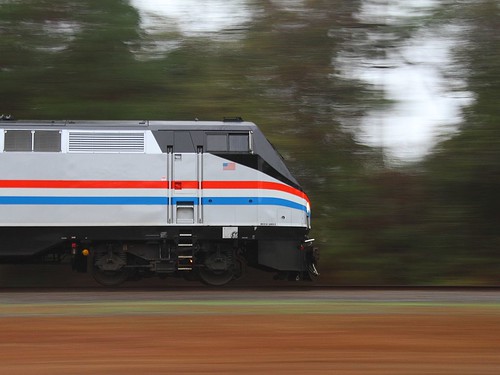
Phase III has always felt tired and cliche to me, but I think that's because it was the 'old' scheme when I was growing up. It's definitely the most classic and recognizably-Amtrak versions and I have developed a growing respect for it. It does work very well on the lines of the AMD-103s.
Untitled by akagoldfish

Phase IV has always been my favorite, especially some of the later versions (many still actively in use). I'm curious how well this design will age when I look back in 20 or 40 years.
2005-5-30 Palmer 91 by traingeek

And finally phase V (included for completeness even though I don't believe Amtrak has marked one for the 40th Anniversary). They feel like a weak austere attempt to mimic the Acela scheme without really suiting the different form of the AMD-103s. Some of the newer versions of phase V are notably better and feel more elegant and classy in comparison, though most of the adaptations to other locomotives like the AEM-7s are just bland. It's amazing what a difference small details like the reflective trim and lines of the engine make. (I also don't like how for the past decade or so the designs have been so fragmented across regions and types of equipment. I prefer how a lot of them look, but it's aggravatingly-inconsistent.)
I haven't been following the news, so I don't know but I'm guessing Amtrak won't do some of the more obscure schemes like the P32-8's Pepsi Can or the original AMD-103 "phase IIIb" fade designs. And certainly not the specifics like Amtrak California's stuff. Still, it is always fun to see old designs adapted to new units that have very different shapes and aesthetic considerations.
Heritage Line Up! by notcheight

Phases I through V lined up left to right.
Amtrak #156 by lukibob17

Phase I is still my least-favorite - I thought it was ugly the first time around, and it doesn't adapt well to the lines of the P40s. The old logo is still much nicer than the stupid swooshes at least (though I'd change a few details like the text placement and spacing of the lines...).
Rounding the curve Amtrak #66 by kschmidt626

Phase II was definitely a product of it's day and I always felt that it aged poorly to my "modern" eyes. Of course, my early opinions were clearly colored by my feelings on the designs from the early Amtrak days in general. I actually think this unit shows it off far better than the original F40PH's did, and certainly better than the Superliner's adaptation.
45 Pace close by notcheight

Phase III has always felt tired and cliche to me, but I think that's because it was the 'old' scheme when I was growing up. It's definitely the most classic and recognizably-Amtrak versions and I have developed a growing respect for it. It does work very well on the lines of the AMD-103s.
Untitled by akagoldfish

Phase IV has always been my favorite, especially some of the later versions (many still actively in use). I'm curious how well this design will age when I look back in 20 or 40 years.
2005-5-30 Palmer 91 by traingeek

And finally phase V (included for completeness even though I don't believe Amtrak has marked one for the 40th Anniversary). They feel like a weak austere attempt to mimic the Acela scheme without really suiting the different form of the AMD-103s. Some of the newer versions of phase V are notably better and feel more elegant and classy in comparison, though most of the adaptations to other locomotives like the AEM-7s are just bland. It's amazing what a difference small details like the reflective trim and lines of the engine make. (I also don't like how for the past decade or so the designs have been so fragmented across regions and types of equipment. I prefer how a lot of them look, but it's aggravatingly-inconsistent.)
I haven't been following the news, so I don't know but I'm guessing Amtrak won't do some of the more obscure schemes like the P32-8's Pepsi Can or the original AMD-103 "phase IIIb" fade designs. And certainly not the specifics like Amtrak California's stuff. Still, it is always fun to see old designs adapted to new units that have very different shapes and aesthetic considerations.
4/18/2011
Pirate Bay and "Cybernorms" Researchers Collaborating
"Pirate Bay becomes 'Research Bay' to aid P2P researchers"
The part that especially caught my eye was the conclusion from their 2009 report:
Wait, we respect the rule of law? I mean, large swaths of law, sure, but as a whole? Not even close. Speeding laws? Alcohol? Pot? All widely considered dumb laws that much of the cultures I've experienced widely reject. And then of course there's mountains of laws that aren't simply dumb, they're overtly discriminatory or immoral. The rampant abuse of copyright law by the MPAA, RIAA, AP, etc is only one more in a long history of legislation that is contrary to the public opinion and common law. In addition to promoting outright "piracy" (I still hate that term, but it's less bad than the very misleading "theft."), I think this witch hunt is promoting a broadening of what we consider fair use in response. I have certainly seen that shift in my life at least, but I can't really say for the larger population(s).
The part that especially caught my eye was the conclusion from their 2009 report:
This reveals a large discrepancy between the viewpoint of copyright legislation and of young people regarding what is right and wrong. File sharers do not believe copyright legislation should interfere with how they use the Internet in their living rooms. If we choose to ignore this discrepancy, we run a clear risk of diminishing younger generations respect for rule of law.
Wait, we respect the rule of law? I mean, large swaths of law, sure, but as a whole? Not even close. Speeding laws? Alcohol? Pot? All widely considered dumb laws that much of the cultures I've experienced widely reject. And then of course there's mountains of laws that aren't simply dumb, they're overtly discriminatory or immoral. The rampant abuse of copyright law by the MPAA, RIAA, AP, etc is only one more in a long history of legislation that is contrary to the public opinion and common law. In addition to promoting outright "piracy" (I still hate that term, but it's less bad than the very misleading "theft."), I think this witch hunt is promoting a broadening of what we consider fair use in response. I have certainly seen that shift in my life at least, but I can't really say for the larger population(s).
3/30/2011
3/24/2011
Updating OCZ Vertex 2 SSD Firmware on a Mac: A Theoretically-Helpful Guide
So, because I couldn't find any guides for quite what I did I figured I'd write a quick summary in the hopes that it can help someone else. Also, I feel like procrastinating a bit. It is hardly a comprehensive tutorial, and I can only speak for my specific setup.
The situation: I have a MacBook Pro 15" Core2Duo running 10.6.7.* I recently swapped in an 80gig OCZ Vertex 2 SSD for the boot drive in place of the old hard drive and moved the hard drive to the optical bay slot using an OptiBay.** I have been having kernel panics every time I try to wake it up from Safe Sleep*** after power loss (swapping batteries w/o power cable). It seems this is a known issue with the OCZ Vertex 2 (and other similar) SSDs. A firmware update**** seems to fix the problem. Unfortunately OCZ has shit-awful support for updating firmware on any non-Windows platform.
I found a few helpful forum discussions, but this is what I did:
First, check your firmware version: In System Profiler (Apple menu --> about this mac --> more info) under the Serial-ATA window in hardware you should see your SSD. Look for the "Revision" next to "Model" and "Serial Number." That is your current firmware version.
To actually change the firmware you need to deal with Windows. I already have Windows 7 installed via Bootcamp on the hard drive, and NTFS-3G installed so OS X can read and write NTFS (the Windows file format). The OCZ firmware updater is a small Windows program. For it to work, the SSD can't be the drive that Windows is booted from, and the SSD needs to have at least a small Windows-formatted partition.
Using Disc Utility I shrunk the existing OS X boot drive partition and added a second partition that was about 6 gigs big. It could probably be smaller. I formatted it as NTFS (possible thanks to the NTFS-3G plugin), but FAT may work or you could format the partition as NTFS from Windows or the Bootcamp Utility app. You don't need to instal anything onto the partition, it only needs to be Windows-formatted (I'm not sure if it must be NTFS or if FAT will also work).
I booted into the existing Bootcamp Windows instal on the hard drive, and ran the OCS firmware updater program following their instructions. (When I first tried I didn't know you had to have a Windows-formatted partition on the SSD, and the program didn't recognize the SSD even though Windows saw it just fine.) Somewhere along here you'll probably have Windows or some antivirus program you installed and forgot about yell at you to register or update or whatever because you haven't booted into Windows in months and never bothered to put in the license key. I cursed a couple times, mashed some buttons to make the dialogs go away, and rebooted into OS X.
I checked the firmware in System Profiler again, saw a higher number, and felt triumphant. A quick test of the Safe Sleep issue was successful, so hopefully that fixed it. Now you can remove the extra partition on the SSD in Disc Utility and have a sandwich.
* I believe this guide applies to all Intel MacBooks, including unibodies, running any OS X, but this is the only unit I have tried.
** The OptiBay has adequate but mediocre build-quality, and at $100 w/ external drive case included is rather over-priced, but it did the job. I have since learned that there are alternatives, but I don't know the specifics.
*** Technically Deep Sleep I believe, but the Mac automatically enters that from Safe Sleep under default settings (I think).
**** In my case the current firmware is 1.32, I believe I started with 1.22 or 1.24 but I didn't keep good notes because I fail at life.
[Edited to fix NTSF to NTFS because yay dyslexia]
The situation: I have a MacBook Pro 15" Core2Duo running 10.6.7.* I recently swapped in an 80gig OCZ Vertex 2 SSD for the boot drive in place of the old hard drive and moved the hard drive to the optical bay slot using an OptiBay.** I have been having kernel panics every time I try to wake it up from Safe Sleep*** after power loss (swapping batteries w/o power cable). It seems this is a known issue with the OCZ Vertex 2 (and other similar) SSDs. A firmware update**** seems to fix the problem. Unfortunately OCZ has shit-awful support for updating firmware on any non-Windows platform.
I found a few helpful forum discussions, but this is what I did:
First, check your firmware version: In System Profiler (Apple menu --> about this mac --> more info) under the Serial-ATA window in hardware you should see your SSD. Look for the "Revision" next to "Model" and "Serial Number." That is your current firmware version.
To actually change the firmware you need to deal with Windows. I already have Windows 7 installed via Bootcamp on the hard drive, and NTFS-3G installed so OS X can read and write NTFS (the Windows file format). The OCZ firmware updater is a small Windows program. For it to work, the SSD can't be the drive that Windows is booted from, and the SSD needs to have at least a small Windows-formatted partition.
Using Disc Utility I shrunk the existing OS X boot drive partition and added a second partition that was about 6 gigs big. It could probably be smaller. I formatted it as NTFS (possible thanks to the NTFS-3G plugin), but FAT may work or you could format the partition as NTFS from Windows or the Bootcamp Utility app. You don't need to instal anything onto the partition, it only needs to be Windows-formatted (I'm not sure if it must be NTFS or if FAT will also work).
I booted into the existing Bootcamp Windows instal on the hard drive, and ran the OCS firmware updater program following their instructions. (When I first tried I didn't know you had to have a Windows-formatted partition on the SSD, and the program didn't recognize the SSD even though Windows saw it just fine.) Somewhere along here you'll probably have Windows or some antivirus program you installed and forgot about yell at you to register or update or whatever because you haven't booted into Windows in months and never bothered to put in the license key. I cursed a couple times, mashed some buttons to make the dialogs go away, and rebooted into OS X.
I checked the firmware in System Profiler again, saw a higher number, and felt triumphant. A quick test of the Safe Sleep issue was successful, so hopefully that fixed it. Now you can remove the extra partition on the SSD in Disc Utility and have a sandwich.
* I believe this guide applies to all Intel MacBooks, including unibodies, running any OS X, but this is the only unit I have tried.
** The OptiBay has adequate but mediocre build-quality, and at $100 w/ external drive case included is rather over-priced, but it did the job. I have since learned that there are alternatives, but I don't know the specifics.
*** Technically Deep Sleep I believe, but the Mac automatically enters that from Safe Sleep under default settings (I think).
**** In my case the current firmware is 1.32, I believe I started with 1.22 or 1.24 but I didn't keep good notes because I fail at life.
[Edited to fix NTSF to NTFS because yay dyslexia]
3/14/2011
"Some Perspective On The Japan Earthquake"
A lot of people have written about how the Japanese earthquake is a perfect example of high engineering standards and rigorous training and preparations paying off, but I especially liked this account.
[via Chockenberry]
A train pulling out of the station had hit the emergency breaks and was stopped within 20 feet — again, just someone doing what he was trained for. A few seconds after the train stopped, after reporting his status, he would have gotten on the loudspeakers and apologized for inconvenience caused by the earthquake. (Seriously, it’s in the manual.)
[via Chockenberry]
3/12/2011
"Durable" instead of "Sustainable"?
A little thought by Human Transit. I'm not sold, though the throwaway comment about "Resilient" caught me eye. [several weeks old, but then I have things I've been meaning to read for far longer and I'll probably post some of those, so, tough]
3/09/2011
2011-03-08 Palmer
I did a little railfanning at Palmer yesterday.
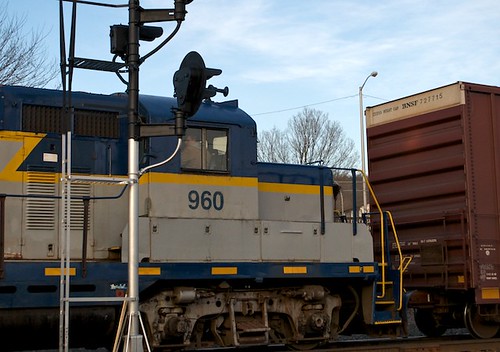
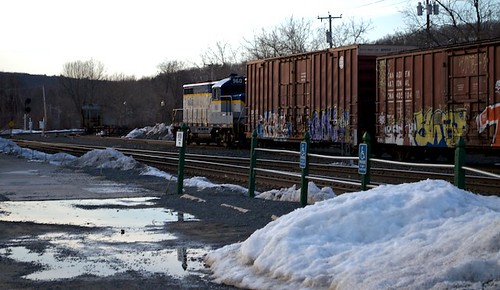
This shot reminds me of a lot of the photos I've seen from the late 70's. Something about the lighting reminds me of the way a lot of the film from then performed/aged I think. Of course, the D&H-inspired paint scheme on an few-decades-old engine helps if you don't look too closely.
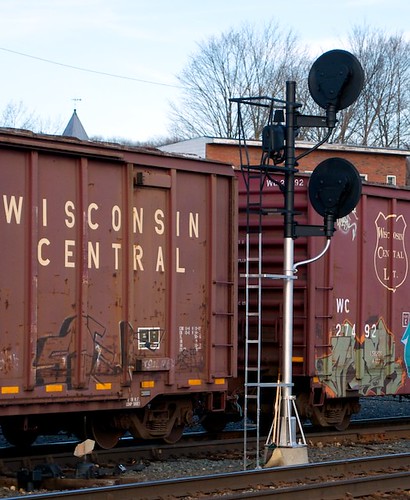


This shot reminds me of a lot of the photos I've seen from the late 70's. Something about the lighting reminds me of the way a lot of the film from then performed/aged I think. Of course, the D&H-inspired paint scheme on an few-decades-old engine helps if you don't look too closely.

3/08/2011
3/06/2011
3/05/2011
three more shots from wednesday evening
On my way to class
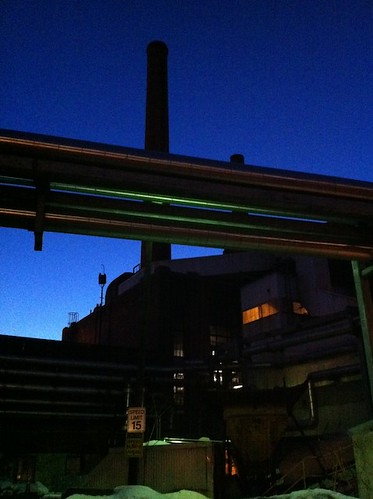

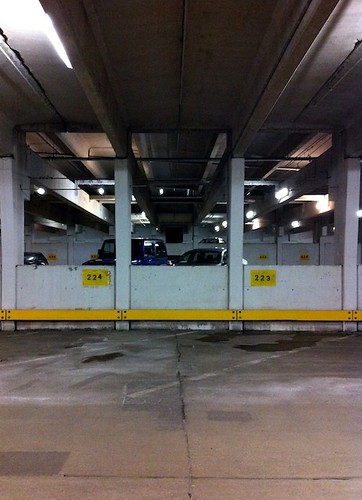
[Remarkably, this also makes 14 out of 18 photos on the front page of my photostream as of this date shot with an iPhone - the other 4 were my DSLR.]



[Remarkably, this also makes 14 out of 18 photos on the front page of my photostream as of this date shot with an iPhone - the other 4 were my DSLR.]
3/04/2011
couple more not-train photos
Cmnd-Option
My desk at night - I actually had my DSLR in reaching distance, but opted for my iPhone instead even though the technical quality of the photos clearly suffered some (sharpness primarily). Telling.

Desk.

My desk at night - I actually had my DSLR in reaching distance, but opted for my iPhone instead even though the technical quality of the photos clearly suffered some (sharpness primarily). Telling.

Desk.

repealing railroads' antitrust exemption?
Time for another of my minimally-edited and haphazardly-written railroad ramblings.
I'm not sure what I think of this bill making its way through the system right now. As with every piece of legislation passed pertaining to the railroads these days, it doesn't understand the true context, ignores the root concerns, forgets history, has some massive unintended consequences, and will inevitably worsen the very problems it's trying to fix. Oh wait, never mind, I know exactly what I think of it. As reported by Progressive Railroading and Railway Age the Senate Judiciary Committee voted to pass the bill that removes American railroads' antitrust exemptions. In general I tend to side with antitrust protections, however there is no doubt that one of the key factors in the railroads' crash was the stifling government rate controls, and their removal did play a major role in the recovery.
Railroads in America are a unique industry, one that few really understand or appreciate. They are very different from every other rail network in the world, and not at all like any other industry in America. In many ways they are most akin to a utility, and in almost all of the rest of the world would be treated as a public entity. But here we have yet another weird not-free market, not-socialist, not-anything else system that evolved over decades into something very peculiar. America (and Canada - the two networks are functionally one and the same in most situations) is perhaps the only place with private, profitable freight railroads. Certainly the only of this scale or of a comparable context. Nothing else comes close, and our freight rail network is far and away one of the best in the world ("best" meaning efficiency especially, and to a lesser degree, capacity and utilization relative to population though some of that is debatable). But just a few decades ago under very different regulatory conditions (and much more - economy, technology, etc) that was not the case. It's outside the scope of this rambling to go into, and has been covered a million times over. All that matters is that we were very close to having a freight rail network of comparable quality to most of the rest of the world in large part due to the regulatory environment of the time, and we're very lucky that didn't happen.
We treat utilities very haphazardly in America, and on the whole very stupidly I think. We set up the system through regulations in such a way that both true competition and the protection of the public interest are prevented. Not to mention a system that economically-encourages poor investment in the network, helping to worsen our infrastructure gap with the rest of the developed world. And yet our railroads are somehow outside of that usual pattern.
I think that going the route that England and a few others have tried to some degree could possibly work, depending on the details. It's always the subtle nuances and follow-through that make or break seemingly-similar systems. Nationalize the backbone network, and allow open competitive access to all companies over the same track. But the path back towards antitrust regulation and rate-setting will almost-certainly cause the same problems it did last time. As it stands, the railroads are regulated, the standards under which they're regulated are just very different. The rate monopoly complaints of shippers that have prompted this legislation? Some of it is very legitimate. Some of it is total bullshit when you look at the overall transportation system in America. But it is still far less of a problem than it had been under previous regulatory environments.
Mostly I just think this will make things worse in the long run if passed, though it probably won't have a significant immediate impact.
I'm not sure what I think of this bill making its way through the system right now. As with every piece of legislation passed pertaining to the railroads these days, it doesn't understand the true context, ignores the root concerns, forgets history, has some massive unintended consequences, and will inevitably worsen the very problems it's trying to fix. Oh wait, never mind, I know exactly what I think of it. As reported by Progressive Railroading and Railway Age the Senate Judiciary Committee voted to pass the bill that removes American railroads' antitrust exemptions. In general I tend to side with antitrust protections, however there is no doubt that one of the key factors in the railroads' crash was the stifling government rate controls, and their removal did play a major role in the recovery.
Railroads in America are a unique industry, one that few really understand or appreciate. They are very different from every other rail network in the world, and not at all like any other industry in America. In many ways they are most akin to a utility, and in almost all of the rest of the world would be treated as a public entity. But here we have yet another weird not-free market, not-socialist, not-anything else system that evolved over decades into something very peculiar. America (and Canada - the two networks are functionally one and the same in most situations) is perhaps the only place with private, profitable freight railroads. Certainly the only of this scale or of a comparable context. Nothing else comes close, and our freight rail network is far and away one of the best in the world ("best" meaning efficiency especially, and to a lesser degree, capacity and utilization relative to population though some of that is debatable). But just a few decades ago under very different regulatory conditions (and much more - economy, technology, etc) that was not the case. It's outside the scope of this rambling to go into, and has been covered a million times over. All that matters is that we were very close to having a freight rail network of comparable quality to most of the rest of the world in large part due to the regulatory environment of the time, and we're very lucky that didn't happen.
We treat utilities very haphazardly in America, and on the whole very stupidly I think. We set up the system through regulations in such a way that both true competition and the protection of the public interest are prevented. Not to mention a system that economically-encourages poor investment in the network, helping to worsen our infrastructure gap with the rest of the developed world. And yet our railroads are somehow outside of that usual pattern.
I think that going the route that England and a few others have tried to some degree could possibly work, depending on the details. It's always the subtle nuances and follow-through that make or break seemingly-similar systems. Nationalize the backbone network, and allow open competitive access to all companies over the same track. But the path back towards antitrust regulation and rate-setting will almost-certainly cause the same problems it did last time. As it stands, the railroads are regulated, the standards under which they're regulated are just very different. The rate monopoly complaints of shippers that have prompted this legislation? Some of it is very legitimate. Some of it is total bullshit when you look at the overall transportation system in America. But it is still far less of a problem than it had been under previous regulatory environments.
Mostly I just think this will make things worse in the long run if passed, though it probably won't have a significant immediate impact.
3/03/2011
The Department of Defense's Corrosion Department
Random stuff like this interests me way more than it should.
The Pentagon itself spends something in the neighborhood of $23 billion per annum to combat the problem. "Weapon systems are routinely out of commission due to corrosion deficiencies," the DoD observes. "For example, corrosion has been identified as the reason for more than 50 percent of the maintenance needed on KC-135 aircraft."
So—get this—the Defense Department has an entire agency that does nothing but try to figure out ways to fight corrosive gunk.
Subscribe to:
Posts (Atom)

